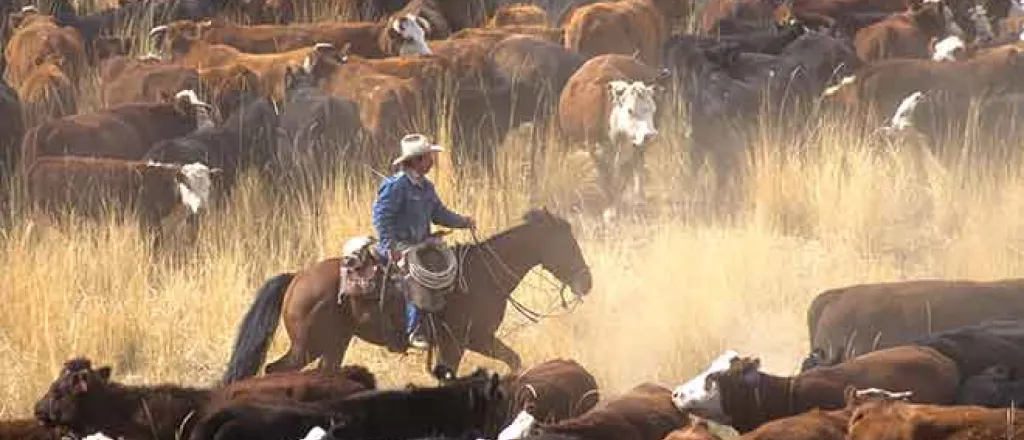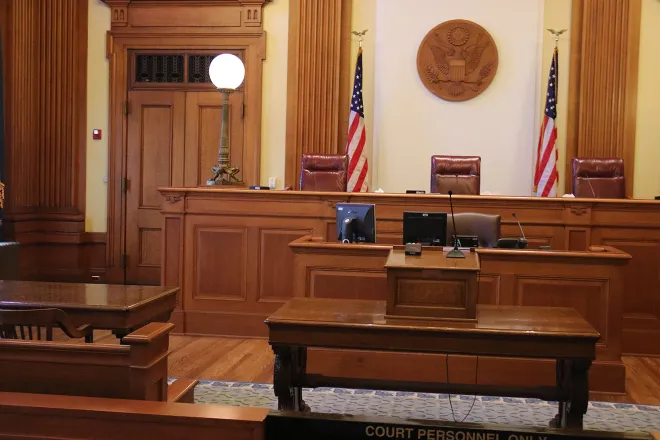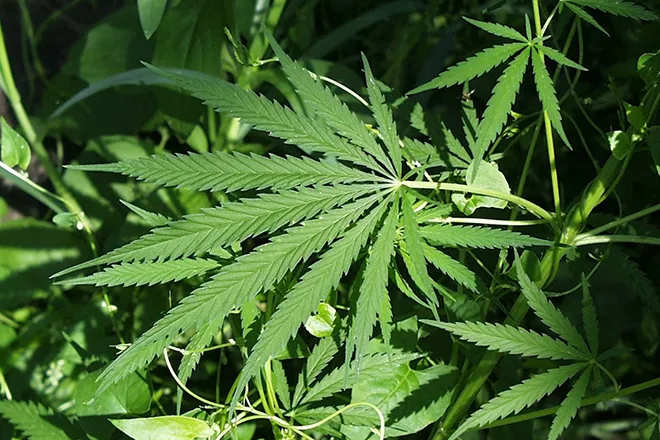
Transcript
[Music] Welcome to the Pasture to Profit podcast with Colorado State Extension's livestock specialist, Travis Taylor, and myself, Scott Stennett.
Travis, in our previous podcast, we discussed bull selection, and now we need to talk about what's important about managing these new bulls that we've brought prior to the breeding season.
We've got a pretty significant investment in genetics and financially in the dollars that we've just spent.
So, what should be our thoughts prior to breeding season on getting these bulls ready to be successful?
Well, Scott, I think we have two sets of bulls that we're talking about, really.
We're talking about bulls that we have just purchased, and we have a set of bulls that we're talking about that are our old herd bull battery, and that's what I would refer to them as.
I think the biggest thing we're talking about here, one of the most important things that doesn't get done a lot of times is exercise.
I mean, we think about all these bulls that may or may not, depending on your operation, have been in a dry lot situation over the winter or a small confined trap, and taking a look at how winter weather, spring weather, muddy weather has softened hooves, caused excessive hoof growth, whether we've had those bulls on a higher concentrate ration.
I think exercise is important.
I believe that you should get your young bulls that you purchased from someone else, bring them home for a minimum of 30 to 45 days, get them out in a larger pasture, let them exercise, particularly if they've been on a high concentrate diet, work off a little bit of the baby fat, I'm going to call it, on those young bulls, and get them limbered up and loosened up and able to travel, harden those hooves before we get them out there.
I also think, as we say, we're going to have a diet change, and that can affect fertility.
We bring those bulls off of high concentrate rations, change their fertility by putting them on an all-grass forage diet, we might cause an upset in their system that could cause a brief, anywhere from two to 10-day decrease in fertility.
And for sure, we don't want that decrease in fertility to be there when we come out of a confined situation and turn you out on grass.
So, I think it's also important that, particularly for our older bulls, we need to pass them through a breeding soundness exam of some kind, particularly with the cold weather that we had in January here in the High Plains area, we definitely want to make sure that we get those bulls tested ahead of breeding season and maybe ahead of bull sale season to see whether we've got any issues of infertility caused by frostbite, excessive cold weather, change those around.
Those things can come and go because the semen in the track, it takes 45 to 60 days to totally produce a sperm cell.
So, if your bulls had a January session where maybe some of the sperm in the epidermis track got froze, got adjusted, had problems with it, doesn't mean that that bull will be permanently infertile, but we probably don't want to test a bull 30 days after a cold spell because that's going to be right in that time period where we may have decreased fertility.
If we would wait 45 to 50 days, we may be able to have that same bull test as far as being a fertile bull with quality semen.
Yeah, Travis, I think you're right.
We've had a lot of conversations with producers that will talk about, "Oh, I had a bull that I brought in from a sale and he just fell apart on me."
But you start asking these questions about, did you give them time to adjust?
Did you give them time for environmental changes, diet changes, obviously sperm production.
They bought the bull on April 1 and then they turn around and turn the bull out on April 15.
Did he really adjust?
So I think thinking about some of those things, I know producers don't want to pay for having a bull around who's not "working" at the time, but that adjustment time is pretty important.
Absolutely.
And again, like you said, we have those people that just bring them in and kick them out with their cows and talk about a biosecurity breach.
I think that's one of those where if you have them around, they may have picked something up and transport or we transport bulls such a long distance these days.
Getting them in early, getting them acclimated and making sure that they're healthy and exercised and ready to go is important.
Well speaking of healthy, other than these kind of things to kind of prep them, almost like an athlete, make sure that they're athletically ready to go.
On the healthcare side, what do we need to think about?
What vaccinations do they need to have?
What other healthcare procedures does a bull need to have before we get ready to turn them out?
Well I think one of the most important things is maybe we want to worm them.
We don't want to add any other type of parasites into our system that we may not have.
So if we get those bulls have time to worm them that 30 days, that would be fantastic.
As far as breeding, I think we want to look at some of the basic virals like IBR and BVD and make sure they have their viral vaccinations up on those.
Some of the breeding diseases such as Vibrio lepto, leptospirosis can look a lot like trichomoniasis where you see open cows and light bred cows if a bull comes in coming from that area.
And then of course on our older bulls, I think if you're running next to a lot of neighbors that you don't know or you join fences with a lot and you've had bulls come back and forth in the previous breeding season, I think it would be very important or your bull has gotten out and a bunch of heifers that the neighbor is trying to keep open that he's brought in from Montana or Arkansas, go ahead and have those older bulls trich tested.
But do it far enough ahead because that procedure can sometimes cause some issues in the lower track.
So again, when you're doing that breeding status exam, it wouldn't hurt to just go ahead and have those bulls trich tested, particularly if you have certain bulls that you think may have been exposed to somebody else's cattle or in the case of like my father, we figured out that we joined fences with about 27 other different ranches.
So you never know whose bulls have necessarily been where in your cow herd.
Right.
And I think another thing, you know, that's talking a lot kind of focused on bulls that we already have here in our bull battery.
But when we're buying bulls, we also need to talk about, you know, what are the health requirements for importing them into the state.
And a lot of your bull producers will give health guarantees.
And so if you're buying a new bull from out of state, what is that health guarantee?
What all has been done from the producer that you're buying this bull from and making sure that you understand all the health that's behind that new bull that you're bringing in?
Yeah, I think that gets to be part of that situational experience that we have.
Right.
And it also goes back to keeping good records.
What day did the bull get here?
If he got sick, how long had it been since he had been on the place?
Is it something he picked up here that we hadn't vaccinated for?
How long ago had he been vaccinated for some of these things can affect his fertility as well?
Because some of these vaccinations, when we talk about using some modified live viruses can cause a fever or a break.
And again, that in itself will affect the fertility of a bull as well.
Yeah.
So a lot of things to think about on the health side.
But let's kind of rotate on.
We've got our breeding soundness.
We're good there.
All our health issues are good there.
Now we're about to turn out bulls, whether they're cleanup bulls behind AI or we're doing nothing but pasture exposure bull breeding in our herd.
We've got our bull battery.
Let's talk about two different scenarios.
We're going to use a single bull for a group of cows and heifers, or we're going to use multiple bulls.
What do we need to think about when we're doing the single versus the multiple bulls in a pasture?
Well, let's talk about single first.
So single bulls, you're really putting all your eggs in one basket, right?
So we kind of as a rule of thumb say that a bull is able to breed the same number of cows as he is months old.
So if we bring in a bull into our system that's 15 months old, we expect for him to be able to settle 15 cows, probably more than that.
But somewhere around that number.
So if we're bringing in a yearling bull or a year and a half old bull, we're going to put him with 15 to 20 cows.
If we've got a two year old bull or a three year old bull, we may expect him to breed 30 to 35 cows very easily.
So just based on the age, know what you have and whether you're exceeding the projections because that young bull may be just running around the pasture squirrelly following the same cow all day instead of an older mature bull that will breed this cow and then go breed another cow and you know, you might have a missed or strung out season.
Also, if you're single use bulls, I would highly suggest maybe rotating bulls through pastures.
You still know what that on a breeding timeline, what those cows are being bred to, but you never know when that bull may have had a fever or may have had an injury or something during breeding when you don't want to miss a 60 day window on a set of cows.
So rotating those bulls every 20, 21 days through single bull pastures would be, I would highly encourage that to help there.
On the flip side, if we're going to mix bulls and turn them out in multiple burrow pastures, I think there's some things we need to stop and think about.
Putting a yearling bull out with two or three mature bulls that are three to four years of age can really cause a lot of injury to those young bulls.
They will get beat up, they will get whipped off, they will be sent to pastures over to the neighbors by those older mature bulls.
Being able to mix bulls appropriately by age and then finally being able to have those bulls mixed before turnout because they will kind of have their pecking order set out in their priority.
I know we had an instance a few years ago on the ranch where we bought a bull, had him delivered, we learned our lesson.
We turned him out and put him in a pen with some older bulls and we're going to mix them and the next morning he had a broken shoulder.
So that was pretty much a bad on us deal because when you do those kind of things, your bull buyer's not necessarily going to stand behind that breeding guarantee if it could have been avoided on your part and was done by just dumping those bulls into a multiple bull pasture with much older bulls.
So those kind of things you need to take into consideration and really have those bulls mixed, as we said, in that exercise period maybe 30 days ahead of turnout.
>>Dr. McDermott So Travis, we've got our bulls that we've assigned them to a pasture, whether as a single or whether as a mixed group, but what about those backup bulls, those in case we do get an injury to a bull, whether it's, you know, he gets a foot problem, whether he gets fighting with the neighbor's bull and then can't perform.
What do we need to think about as far as these extra bulls?
>>Travis Payne Yeah, Scott, I think it's cheap insurance, right?
If we have an extra bull around, maybe he's a bull that we have used for two or three years and he's past his fertility, we think we're going to buy a new one.
Maybe we keep him around and we're maybe putting a little extra pounds of flesh on him, but we keep him around until we're through with our breeding season because that's a cheap deal.
Or we go to a sale and as you and I talked in the previous one, we see that bull that maybe is worth the money and it's not going to hurt our program, that's maybe lower on our list, it's undervalued.
We maybe have that bull and we maybe pick him up because he is a simple insurance policy.
I think I don't have a set number in mind of what I would have, but I know for a fact, usually if you have one or two spare bulls around, you're probably going to use them before the end of the breeding season.
It also gives us an opportunity if something does get injured, we get him out of the pasture in a more precise timeframe that we get him healed back up and he'll be ready for the next breeding season rather than maybe having to feeling like we need to leave him out there.
Maybe he covers that one or two extra cows.
It becomes a better management tool to have one or two extra bulls if you have the ability.
Yeah, having open cows is just like leaving money on the table.
If they're not getting bred, we're not going to make money come weaning time or whenever we decide to market those calves.
Absolutely.
This year, with the way the coal bull prices are, it might be time to look at replacing some of those old bulls that you have in your system because the cost between a new bull and what you can get for a mature coal bull right now is shrinking due to the extended high levels in the beef market.
Yeah, prices the way they are now.
Always put pencil to paper before you do anything, but making these good selections and making sure bulls are ready to go when it's time for breeding is going to be essential to make sure that we get those calves on the ground that, hey, this year they were $1,200 to $1,500 per calf on those five and six and seven weights and who knows what they're going to be coming up here in the fall.
Great conversation there on what we need to do to get these bulls ready for breeding season.
So if you have any questions about our topic for today or you want to suggest a topic for in the future on Pasture to Profit Podcast, feel free to get ahold of us and you can get ahold of me, Scott.
I'm here at the Kit Carson County Extension Office in Burlington.
Give me a call at 719-346-5571.
And Travis?
You can call me at the Yuma County Extension Office at 970-332-4151.
And again, thanks for listening and joining us here on Pasture to Profit Podcast.
We hope to see you next time.
[MUSIC PLAYING]








